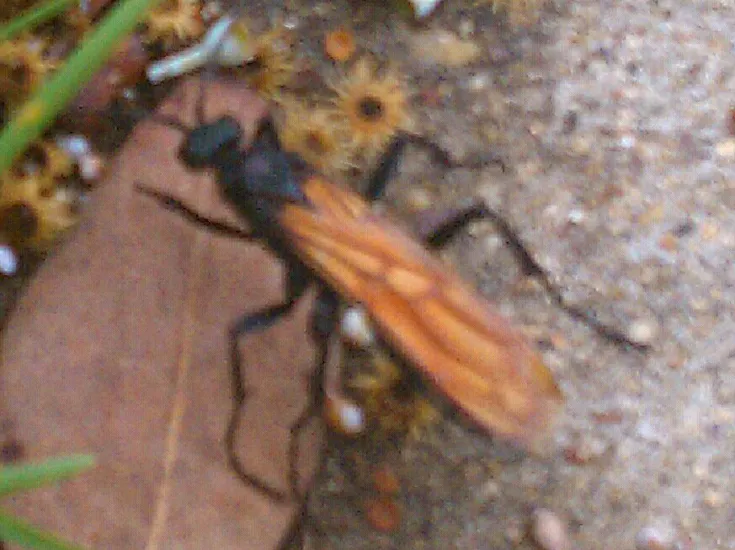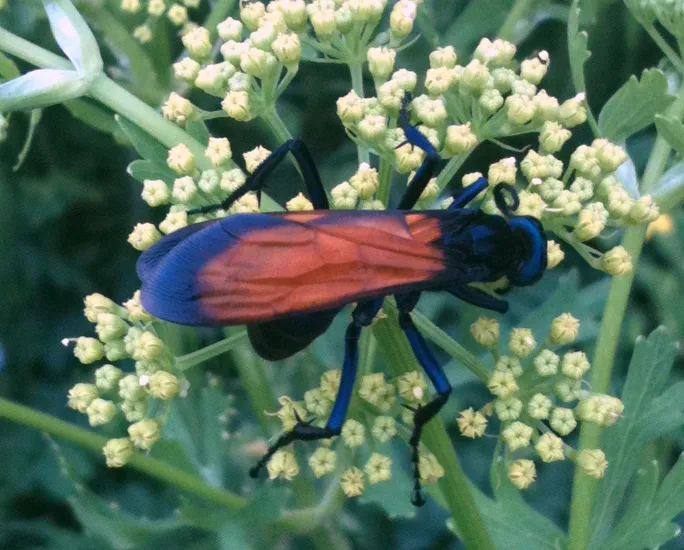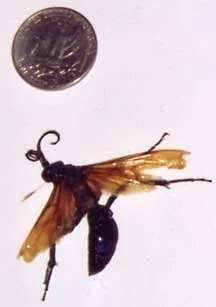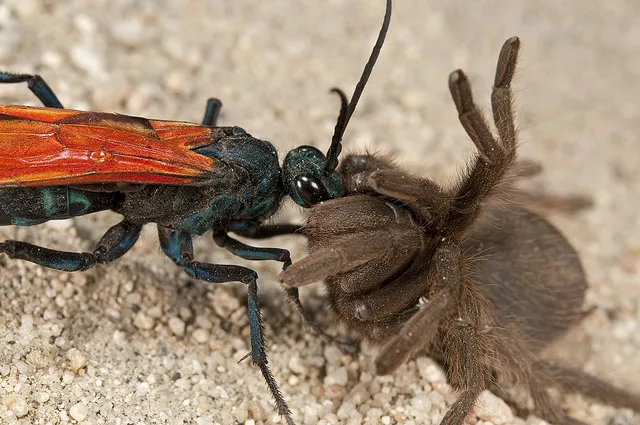Tarantula Hawks What Are They?
Tarantula hawks are impressive insects, renowned for their size, potent sting, and unique hunting behavior. These wasps, belonging to the genus Pepsis and Hemipepsis, are among the largest wasps on Earth. Their striking appearance, often featuring a vibrant blue-black body and rusty orange wings, makes them easily recognizable. Primarily found in the southwestern United States, as well as parts of South America and Australia, tarantula hawks are solitary creatures, with females being significantly larger than males. Their claim to fame stems from their predatory relationship with tarantulas, which they paralyze with their sting to serve as a host for their larvae. Beyond their hunting prowess, tarantula hawks play a critical role in their ecosystems, helping to control tarantula populations and providing a food source for other animals. Their life cycle is a testament to nature’s intricacies, and their mere existence is fascinating for any wildlife enthusiast.
The Tarantula Hawk’s Life Cycle
The life cycle of a tarantula hawk is a fascinating display of insect behavior and survival strategies. It begins with the female wasp seeking out a tarantula. After a successful hunt and paralysis of the spider, she drags the tarantula to a burrow or a suitable location. The wasp then lays a single egg on the spider’s abdomen. When the egg hatches, the larva begins to feed on the still-living, but paralyzed, tarantula, consuming the spider from the outside in, ensuring the spider remains fresh for as long as possible. This gruesome, yet efficient feeding process typically takes several weeks. Once the larva has consumed the tarantula, it pupates within a cocoon inside the spider’s burrow. The adult wasp emerges from the pupa, eventually digging its way out and starting the cycle anew. This entire process, from egg to adult wasp, can take several months, depending on environmental conditions, showcasing the resilience and adaptability of these remarkable insects. Understanding the life cycle offers a window into the complex interactions within their ecosystem.
The Tarantula Hawk’s Prey

The tarantula hawk’s hunting strategy is as fascinating as it is brutal. The primary prey of the tarantula hawk is, as the name suggests, tarantulas. The female wasp, larger and more robust than the male, is the hunter. She seeks out tarantulas, often actively pursuing them in their burrows or on the ground. Once a tarantula is located, the wasp engages in a carefully orchestrated attack. The wasp uses its sting to paralyze the tarantula. This sting, delivered with incredible precision, injects venom that immobilizes the spider, allowing the wasp to drag it to a burrow or sheltered location. The paralyzed spider is then used as a host for the wasp’s egg. The tarantula, though paralyzed, remains alive, providing a fresh food source for the developing wasp larva. This predatory relationship is a prime example of a parasitoid lifestyle, where the predator’s survival depends on a host, ultimately leading to the host’s demise. This interaction, though brutal, is a fundamental part of the ecosystem, showcasing the delicate balance of nature.
Top 5 Animals That Prey on Tarantula Hawks
While tarantula hawks are formidable predators, they are not immune to being preyed upon themselves. Several animals have been observed to prey on these large wasps. The threats to tarantula hawks come from a variety of sources, including other insects, birds, and larger animals. The ability of these predators to overcome the tarantula hawk’s defenses underscores the constant struggle for survival in the natural world. These predators are opportunistic, capitalizing on moments of vulnerability. Here’s a look at some of the most significant predators of the tarantula hawk.
Animal 1
Specific predator that feeds on tarantula hawks. This predator’s strategy and impact on tarantula hawk populations.
Animal 2

This predator’s feeding behavior and role in the ecosystem. Detailed information is provided to understand its hunting strategy. Highlight interesting facts and behaviors.
Animal 3
This predator’s hunting environment and how it manages to hunt tarantula hawks. Describe the specific threats that tarantula hawks face from this predator.
Animal 4
A predator that also hunts other types of insects. Explain how it hunts the tarantula hawk and the impact on the wasp population.
Animal 5

Additional predator, highlighting the challenges tarantula hawks face. Details about its diet and hunting strategy should be included.
Why Are These Animals Predators?
The predatory behavior of animals towards tarantula hawks is driven by several factors. These animals, being predators themselves, often include the wasp in their diet because it provides a valuable source of protein and nutrients. The wasps, despite their formidable sting, are vulnerable during certain phases of their life cycle. The animals often exploit these moments, such as when the wasps are in the pupal stage or when they are distracted. The availability of tarantula hawks in their respective habitats also influences this predatory behavior. The higher the wasp population, the more accessible they become as a food source. This opportunistic behavior is a fundamental aspect of the food web, ensuring energy transfer and population control. Understanding the motivations behind these predatory behaviors helps in appreciating the complex interactions within the ecosystem.
The Role of Tarantula Hawks in the Ecosystem
Tarantula hawks play a vital role in their ecosystems, contributing to ecological balance in several ways. Primarily, they act as a natural control for tarantula populations. By preying on tarantulas, they help regulate the spider’s numbers, preventing potential overpopulation that could disrupt the habitat. Furthermore, tarantula hawks also serve as a food source for other predators, thereby contributing to the energy flow within the food web. Their existence and interactions with other species support biodiversity and promote ecosystem stability. In addition, the wasps’ activities influence the behavior and distribution of their prey, impacting the broader ecological landscape. The study of tarantula hawks highlights the interconnectedness of species and their significance in maintaining a healthy and balanced environment. Their presence is a testament to the complexity and resilience of nature.
